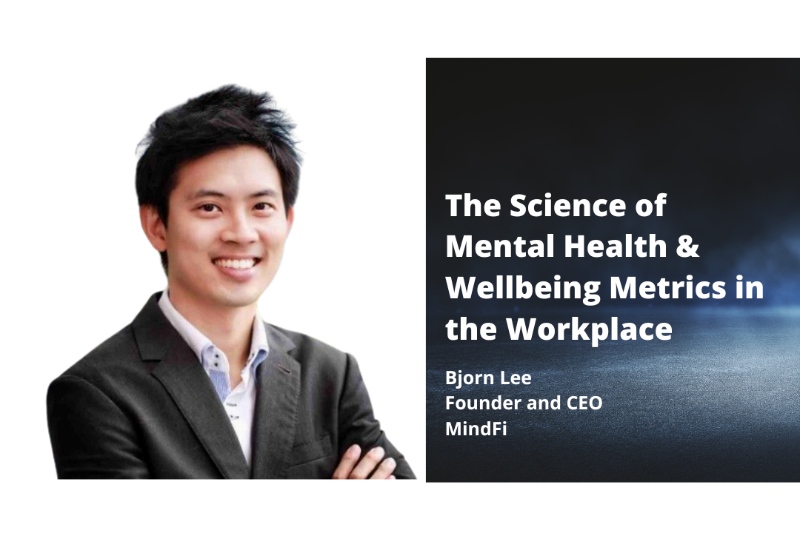A few years ago, some might’ve said it was impossible to track happiness at all. However, thanks to advancements in data analytics, it is now possible to quantify employees’ mental wellbeing and measure its impact on a company’s bottom line.

As early as 2017, 7 in 10 executives believed that people analytics would be important for the future of HR in talent recruitment, management, and retention. Previously, this centered around generous compensation packages and cute perks like free gym memberships. But recent changes to the workplace in the last few years have rendered these insufficient. Employees are now far less likely to stay in a situation where they feel unreasonably stressed and exhausted.
In response to these cultural shifts, employee wellbeing programs (which may include employee assistance programs [EAP]) have grown beyond physical wellbeing to encompass other aspects of health, like mental and emotional wellness.
A few years ago, some might’ve said it was impossible to track happiness at all. However, thanks to advancements in data analytics, it is now possible to quantify employees’ mental wellbeing and measure its impact on a company’s bottom line.
Some companies measure Net Promoter Scores to see whether employees would recommend them to others. Others host a wellbeing webinar, then conduct a satisfaction survey afterwards to see if the effort was worth it. MindFi, on the other hand, has partnered with some of the largest companies in Asia and business school researchers to develop a three-part data-driven framework that can measure success.
1. Engagement Metrics
The value of an employee wellbeing program lies firstly in the value placed on it by its users, as seen in metrics involving its uptake and usage. In order to see the desired end result (changed behavior), HR leaders should see it as a funnel and track metrics related to awareness, conversion, retention and more. A successful wellbeing program provides enough content “hooks” to trigger interest and education, rather than “shoving” employees to the digital doors of EAP and expecting magically high uptake.
At MindFi, the numbers that form our “funnel” include anything from email newsletter and intranet post engagement to app downloads and daily app usage. These provide us and our clients with valuable insight on how to further increase engagement and provide more value.
EAP sessions are a great example. Before booking EAP sessions with a coach or therapist, MindFi app members tend to peruse self-care app features, such as mindfulness and journaling sessions, and attend group-based webinars. This insight is especially important in effectively changing attitudes towards getting support, especially with the stigma attached to mental health in Asia.
2. Effectiveness Metrics
A core maxim of the MindFi Analytics solution is that “what you can’t measure, you can’t improve.” It is not enough to know that a wellbeing program is popular. We also need to know that it is effective.
MindFi has adopted the World Health Organization’s WHO-5 Wellbeing Index, which tracks an individual’s physical, mental, emotional, social and spiritual wellbeing. This index has been validated through a number of studies since its introduction 24 years ago. We combine that with other evidence-based assessments for social wellbeing, resilience and productivity.
Through a series of in-app incentives and gamified reminders, we are able to maintain or improve mental health states at both the individual and workforce level over two-week intervals. We splice the data at a country or departmental level for HR leaders to glean workforce insights and take supportive action, if necessary.
3. Productivity Metrics
Beyond metrics that reflect engagement and effectiveness, companies benefit from a more robust framework that can accurately track an initiative’s ROI and impact. Aside from our research efforts with business and medical schools, we constantly fine-tune our products by tracking anonymized HR data points (e.g., absenteeism, presenteeism, insurance claims) from our clients. This gives us a deeper and constantly evolving understanding of how to quantify personal productivity factors like attention span, team-level psychological safety, and emotional intelligence, and of program ROI as a whole.
4. A data-driven approach to better wellbeing
There are plenty of different metrics that you can assess to gauge employee satisfaction, performance, and productivity. If you’re just starting out, it may seem overwhelming at first. The key is to start small and reflect on what “success” looks like for you — it could be lower attrition, improved wellbeing, or increased employee referrals. Of course, if you prefer to dive in headfirst, MindFi can help you take the guesswork out of the equation. Ask us how.
References:
- People analytics: Recalculating the route. Source: Deloitte
https://www2.deloitte.com/us/en/insights/focus/human-capital-trends/2017/people-analytics-in-hr.html - Over half of employees in APAC might quit their job if not provided flexibility at work. Source: Human Resources Online.net
https://www.humanresourcesonline.net/over-half-of-employees-in-apac-might-quit-their-job-if-not-provided-flexibility-at-work - NetPromoterScore.Source: https://www.netpromotersystem.com/
- Who-FiveWell-being Index (WHO-5). Source: https://www.psykiatri-regionh.dk/who-5/Pages/default.aspx
About the author :

Prior to founding mental health app MindFi, Bjorn held a number of high-pressure roles in tech companies and startups. His firsthand experience with work-related stress and anxiety led him on a mission to revolutionize corporate Asia’s understanding of mental health. Today, MindFi helps startups and Fortune 500 companies alike in optimizing workforce wellbeing and performance.

